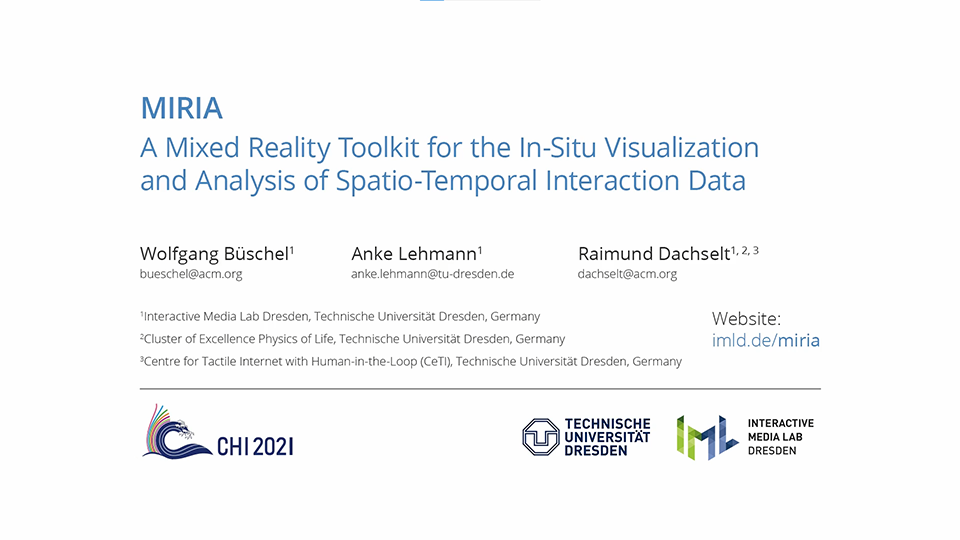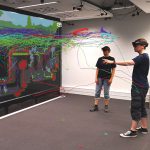
With MIRIA, the Mixed Reality Interaction Analysis Toolkit, we aim to support the in-situ analysis of spatial interaction data in mixed reality and multi-display environments.
MIRIA Introduction
Quick Access
Download the pre-print:
Abstract
We present MIRIA, a Mixed Reality Interaction Analysis toolkit designed to support the in-situ visual analysis of user interaction in mixed reality and multi-display environments. So far, there are few options to effectively explore and analyze interaction patterns in such novel computing systems. With MIRIA, we address this gap by supporting the analysis of user movement, spatial interaction, and event data by multiple, co-located users directly in the original environment. Based on our own experiences and an analysis of the typical data, tasks, and visualizations used in existing approaches, we identify requirements for our system.
We report on the design and prototypical implementation of MIRIA, which is informed by these requirements and offers various visualizations such as 3D movement trajectories, position heatmaps, and scatterplots. To demonstrate the value of MIRIA for real-world analysis tasks, we conducted expert feedback sessions using several use cases with authentic study data.
Presentation @ ACM CHI ’21
The paper will be published in the Proceedings of the 2021 CHI Conference. It will be presented online during the conference in May 2021.
Source Code & Online Documentation
The source code of the MIRIA toolkit, the documentation, as well as an example dataset will be made publicly available on Github.
Repository Link: github.com/imldresden/miria
Publication
@inproceedings{fixme,
author = {Wolfgang B\"{u}schel and Anke Lehmann and Raimund Dachselt},
title = {MIRIA: A Mixed Reality Toolkit for the In-Situ Visualization and Analysis of Spatio-Temporal Interaction Data},
booktitle = {Proceedings of the 2021 CHI Conference on Human Factors in Computing Systems},
series = {CHI '21},
year = {2021},
month = {5},
isbn = {978-1-4503-8096-6/21/05},
location = {Yokohama, Japan},
numpages = {15},
doi = {10.1145/3411764.3445651},
publisher = {ACM},
address = {New York, NY, USA},
keywords = {interaction analysis, immersive analytics, in-situ analysis, in-situ visualization, augmented reality, human-computer interaction, visualization}
}Weitere Materialien



